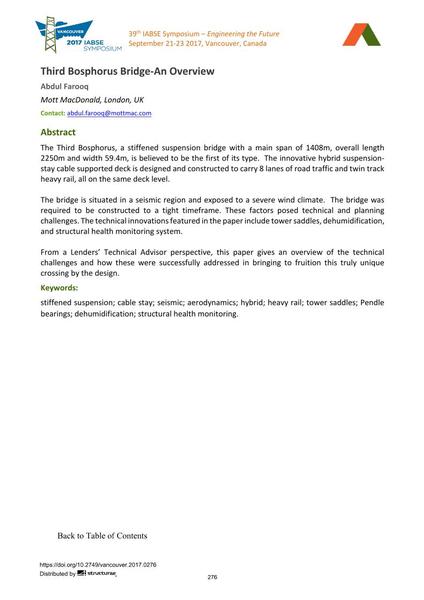Third Bosphorus Bridge-An Overview

|
|
|||||||||||
Détails bibliographiques
| Auteur(s): |
Abdul Farooq
(Mott MacDonald, London, UK)
|
||||
|---|---|---|---|---|---|
| Médium: | papier de conférence | ||||
| Langue(s): | anglais | ||||
| Conférence: | IABSE Symposium: Engineering the Future, Vancouver, Canada, 21-23 September 2017 | ||||
| Publié dans: | IABSE Symposium Vancouver 2017 | ||||
|
|||||
| Page(s): | 276-283 | ||||
| Nombre total de pages (du PDF): | 8 | ||||
| Année: | 2017 | ||||
| DOI: | 10.2749/vancouver.2017.0276 | ||||
| Abstrait: |
The Third Bosphorus, a stiffened suspension bridge with a main span of 1408m, overall length 2250m and width 59.4m, is believed to be the first of its type. The innovative hybrid suspension- stay cable supported deck is designed and constructed to carry 8 lanes of road traffic and twin track heavy rail, all on the same deck level. The bridge is situated in a seismic region and exposed to a severe wind climate. The bridge was required to be constructed to a tight timeframe. These factors posed technical and planning challenges. The technical innovations featured in the paper include tower saddles, dehumidification, and structural health monitoring system. From a Lenders’ Technical Advisor perspective, this paper gives an overview of the technical challenges and how these were successfully addressed in bringing to fruition this truly unique crossing by the design. |
||||
